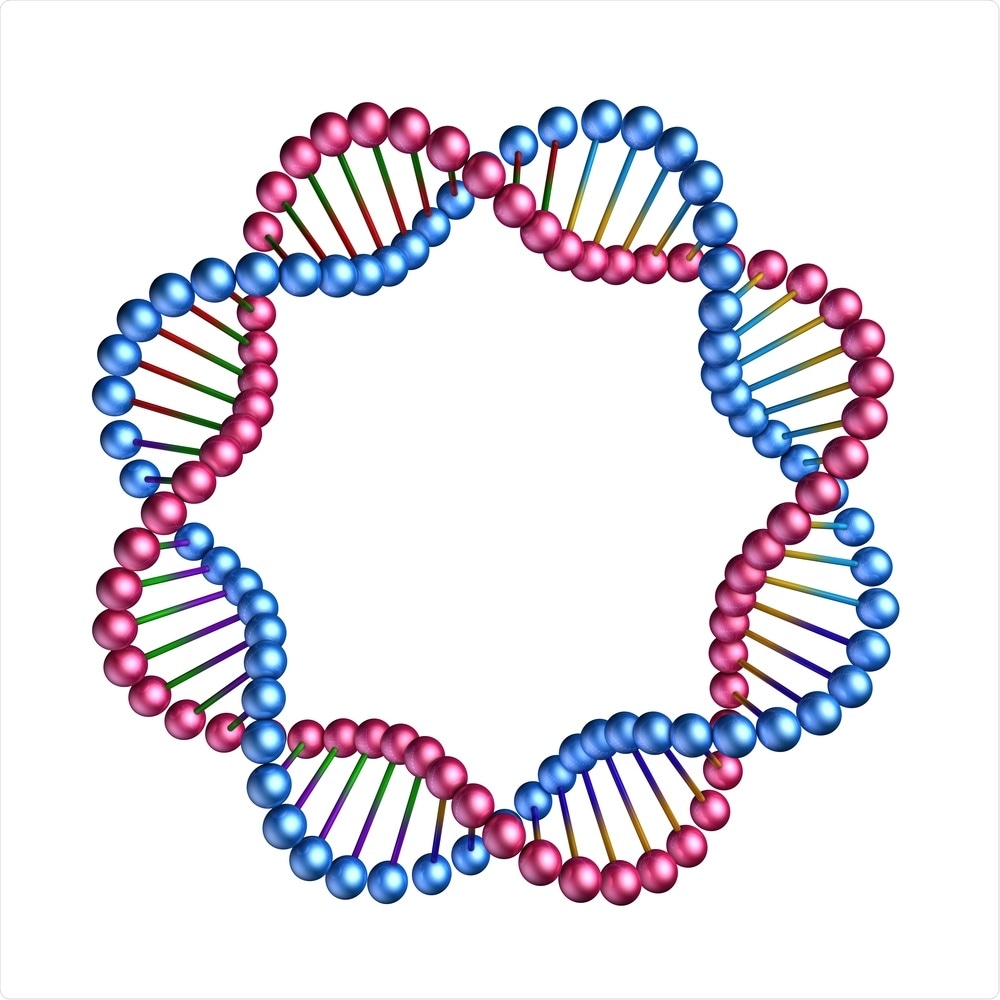University of Alberta biologists have invented a new way of sequencing circular DNA, according to a new study. The tool, called CIDER-Seq, will give other scientists rich, accurate data on circular DNA in any type of cell.

Image Credit: clever/Shutterstock.com
While our own DNA is linear, circular DNA is common in the genomes of bacteria and viruses. Scientists have also discovered circular DNA within the nuclei of human and plant cells, called extrachromosomal circular DNA (eccDNA).
Recently, research has begun to investigate the role of eccDNA in human cancer--but progress has been hampered due to the lack of effective methods for studying and sequencing eccDNA.
"Our key advance is that, through our method, scientists can finally gain an unbiased, high-resolution understanding of circular DNA in any type of cell," explained Devang Mehta, a postdoctoral fellow in the Department of Biological Sciences and lead author.
With our invention of CIDER-Seq, we can start to begin to understand the function of these mysterious circular DNAs in human and plant cells."
CIDER-Seq uses DNA sequencing technology called PacBio. The method includes a web-lab protocol, as well as a new computational pipeline. It is optimized to examine both viral genomes and eccDNA and is made accessible to other scientists online.
We devised a new molecular biology method and a new bioinformatics algorithm to finally obtain full-length sequences of eccDNA. Our method finally allows us to sequence these molecules completely and gives us and other researchers a tool to better understand what they actually do in the cell."
Mehta
The work was a collaboration with Herve Vanderschuren at the University of Liege in Belgium.
Funding for this research was provided by Mehta's fellowships from the Swiss National Science Foundation and the European Commission's Seventh Framework Programme. The Vanderschuren lab was supported by the Fonds de la Recherche Scientifique and the LEAPAgri program of the European Union.
Journal reference:
- "Full-length sequencing of circular DNA viruses and extrachromosomal circular DNA using CIDER-Seq," was published in Nature Protocols (doi: 10.1038/s41596-020-0301-0).